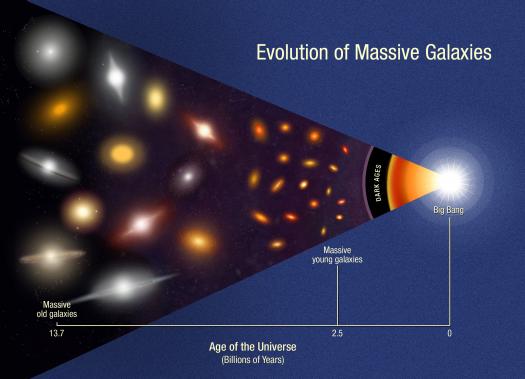Dramatic Transformation of Massive Galaxies over 10 Billion Years
The most massive galaxies present two to three billion years after the Big Bang differ dramatically from today’s, when the universe is 13.7 billion years old. A remarkably high fraction of the massive young galaxies host disk components, making them look like thick pancakes. In contrast, today’s most massive galaxies (ellipticals and lenticulars) typically have large bulges, and are shaped like watermelons. Additionally, 40% of the young massive galaxies are ultra-compact, compared to less than 1% of their massive elliptical and lenticular descendants today. Credit: T. Weinzirl, S. Jogee (U. Texas)/ A. Feild (STScI/NASA)






